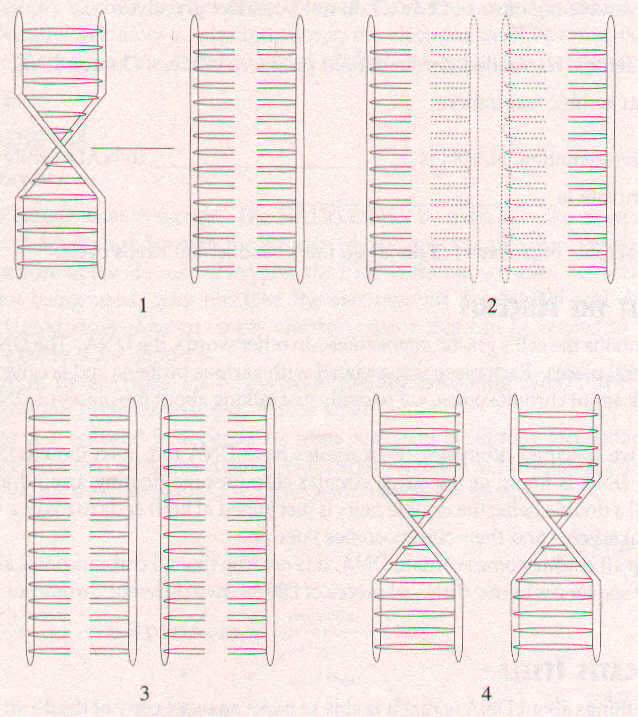DNA Replicates Itself
One of the cool things about DNA is that it is able
to make an exact copy of itself - in other words, it's
able to replicate. This is necessary, to do when cells
want to divide.
In order for the two new cells to be
identical, the original cell first has to replicate
its DNA, then divide the replicated DNA evenly between
the two new cells. Let's take a look now at how DNA
replicates.
There are four simple steps to replication:
- The double helix unwinds, and the two strands separate.
- Next to each separated strand, an enzyme called
DNA polymerase lines up nucleotides to form new second
strands. The enzyme lines up nucleotides according to
the base-pairing rules.
Adenines are paired with thymines,
and thymines are paired with adenines. Guanines are
paired with cytosines, and cytosines are paired with
guanines.
- Hydrogen bonds form between the base pairs, forming
the new "rungs" of the DNA ladder. Bonds form between
the sugar-phosphate components of the newly aligned
nucleotides so that each newly formed ladder has a new
side, too.
- The new double-stranded molecules twist up into
double helices.
Let's start with one DNA molecule.

The strands separate
and for each strand, the cell makes a new complementary
strand, and we end up with two new, but identical, DNA
molecules. The original DNA molecule has replicated.
|

